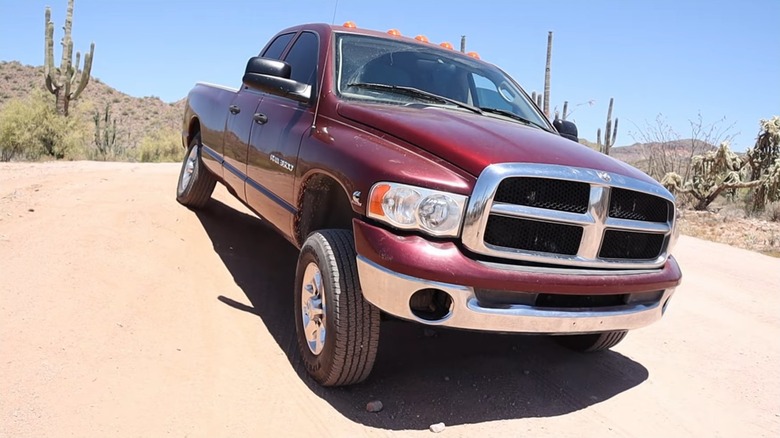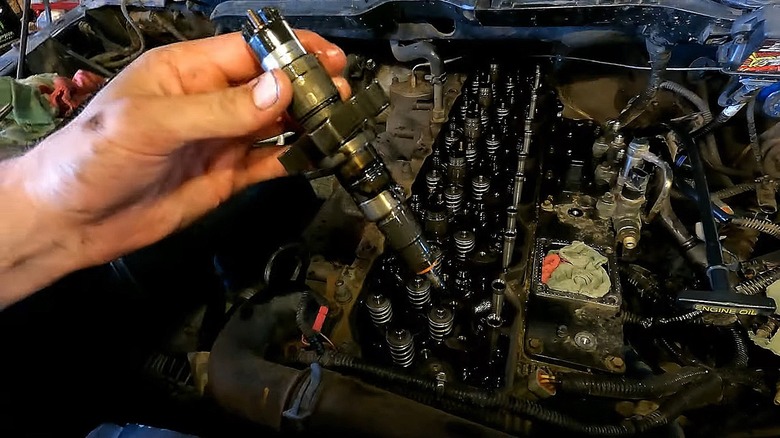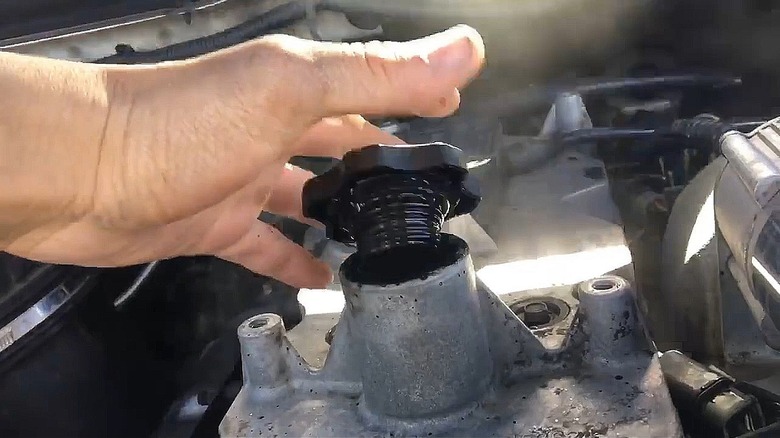Common Problems With Third Gen Cummins Engines (According To Owners)
The first RAM with a Cummins engine under the hood was launched in 1989 and has continued to evolve, now in it's fifth generation. In 2003, the popular heavy-duty truck offered the Cummins third generation of engines, the 5.9-liter inline-six-cylinder diesel. Another change was a switch to 24-valves over the previous 12-valve setup which enhanced performance. With improvements made over its lifespan, the third generation Cummins was able to boost output to 305 horsepower and 555-pound feet of torque. The 5.9-liter lasted until 2007, when Cummins launched their larger 6.7-liter engine, kicking off the next generation.
But while many fans say the third generation is one of the five best years for Cummins diesel engines, there were also some issues widely reported by owners. For example, some reported expensive injector malfunctions and clogs that caused the engine to run rough, along with pump problems, while others experienced excessive blowby. However, most owners overwhelmingly recommend this particular Cummins iteration, with reliability being a major influence on their positive opinion. This generation was also the last to remain free of the Exhaust Gas Recirculation system, which lowers emissions but also performance, making the 5.9-liter Cummins third generation still a highly sought after engine.
Pump and fuel injector issues
The 2003 Dodge Ram heavy-duty received the most complaints out of any other year that generation, according to CarComplaints.com. One problem was the injectors not properly delivering fuel, which can manifest in symptoms like rough idling, or shaking at specific RPMs, among other things. Some owners explained that they believed the factory filter wasn't up to the job and this could be the reason for plugged fuel injectors and suggested a more robust aftermarket filter would help prevent problems. Several reviews on Edmunds.com of the Dodge 3500 5.9-liter Cummins describe injector related trouble around the 100,000-mile mark, making for a frustrating and costly repair experience.
One owner who was experiencing trouble lamented, "Took to local dealer 3 times before replacing injectors and injector pump." Another complained, that injector problems at 100,000 miles aren't exceptable and after a hefty repair bill that included new injectors, the owner was out $8,000 in repairs. Fortunately, there are several tips and tricks to clean fuel injectors preventing clogs which can hamper performance.
Even the CP3 injection pump which replaced the more problem laden VP44, and offered better performance on the 5.9-liter Cummins, is known to create more pressure, which can lead to problems on the 2004 and up Dodge Ram.
Too much blowby
If you're unfamiliar, blowby on a diesel engine means gasses are leaking out of the cylinder during compression. No engine is immune to some amount of blowby, but there is a point where it becomes a sign that something isn't right. In some cases, a faulty fuel injector could deliver too much mixture into the cylinder causing damage to the seals. One owner stated, their 2006 Dodge 3500 was smoking, and when the oil cap was loosened, it would get blown off, indicating too much pressure was escaping.
Another owner recounted that they noticed their Cummins was going through a lot of oil and some troubleshooting led him to the crank case where tremendous pressure was causing blowby. When explaining an issue with their Ram truck, an owner relayed, "from everything I've researched and opinions I've gotten on [blowby], basically the consensus is to fix it sooner than later, because it can be much more expensive later on, especially if [it's] a piston [ring]."


